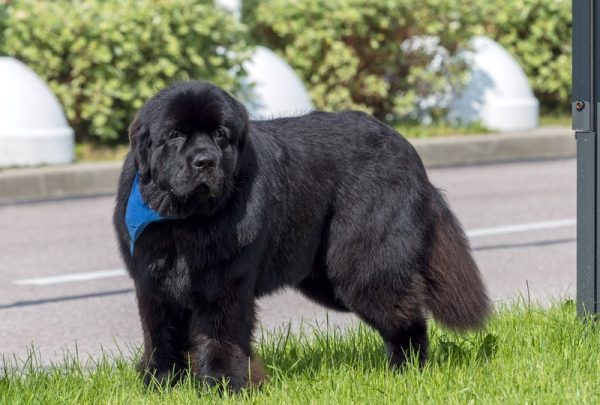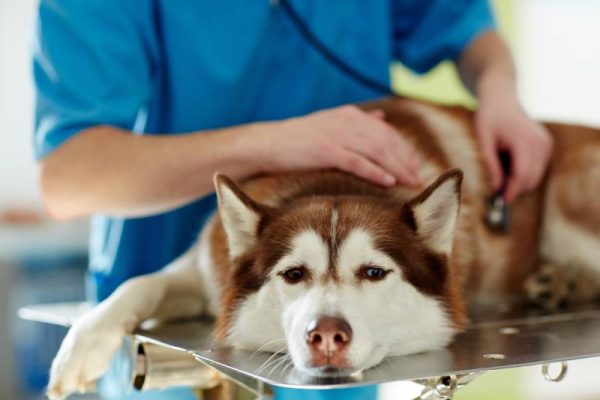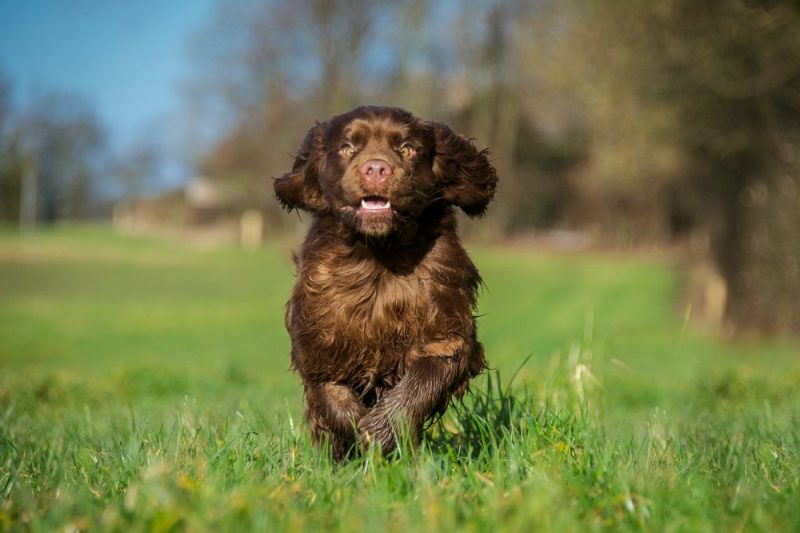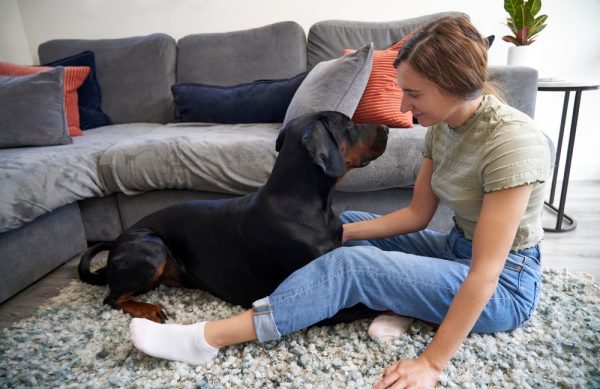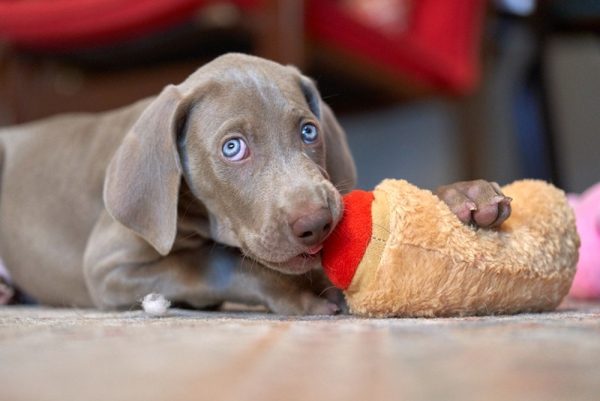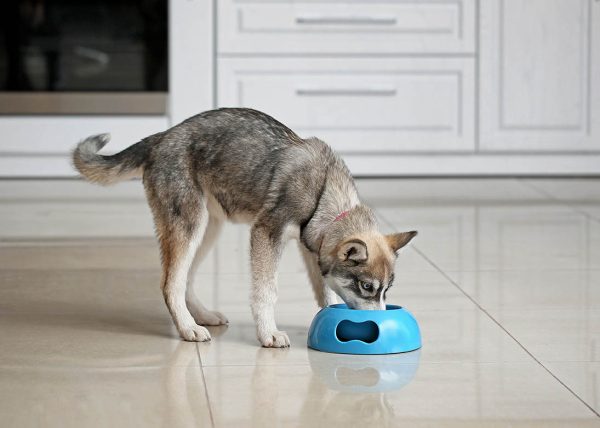In this article
Corgis, the cute but stout little dogs from Wales and favorites of British royalty, are now becoming more popular in American homes. But before you go out and buy one, there is something important that you should know.
Typically, these dogs are just generally referred to as “Corgis,” but there are actually two distinct breeds: the Cardigan Welsh Corgi and the Pembroke Welsh Corgi. The two are quite similar, so it isn’t that easy to tell them apart.
But upon closer inspection, you’ll see that there are slight differences in both the appearance and personality of each type. Knowing the differences between the Cardigan Welsh Corgi vs the Pembroke Welsh Corgi can help you make the best decision when looking for a lifelong companion.
Here, we share everything that you need to know before deciding between a Cardigan Welsh Corgi and a Pembroke Welsh Corgi.

Visual Differences

At a Glance
- Average height (adult): 10.5–12.5 inches
- Average weight (adult): 25–38 pounds
- Lifespan: 12–15 years
- Exercise: 1–2 hours per day
- Grooming needs: Moderate
- Family-friendly: Yes
- Other pet-friendly: Often
- Trainability: Affectionate, loyal, smart
- Average height (adult): 10–12 inches
- Average weight (adult): Up to 30 pounds
- Lifespan: 12–13 years
- Exercise: 1–2 hours a day
- Grooming needs: Moderate
- Family-friendly: Yes
- Other pet-friendly: With supervision
- Trainability: Affectionate, alert, smart

Cardigan Welsh Corgi Overview
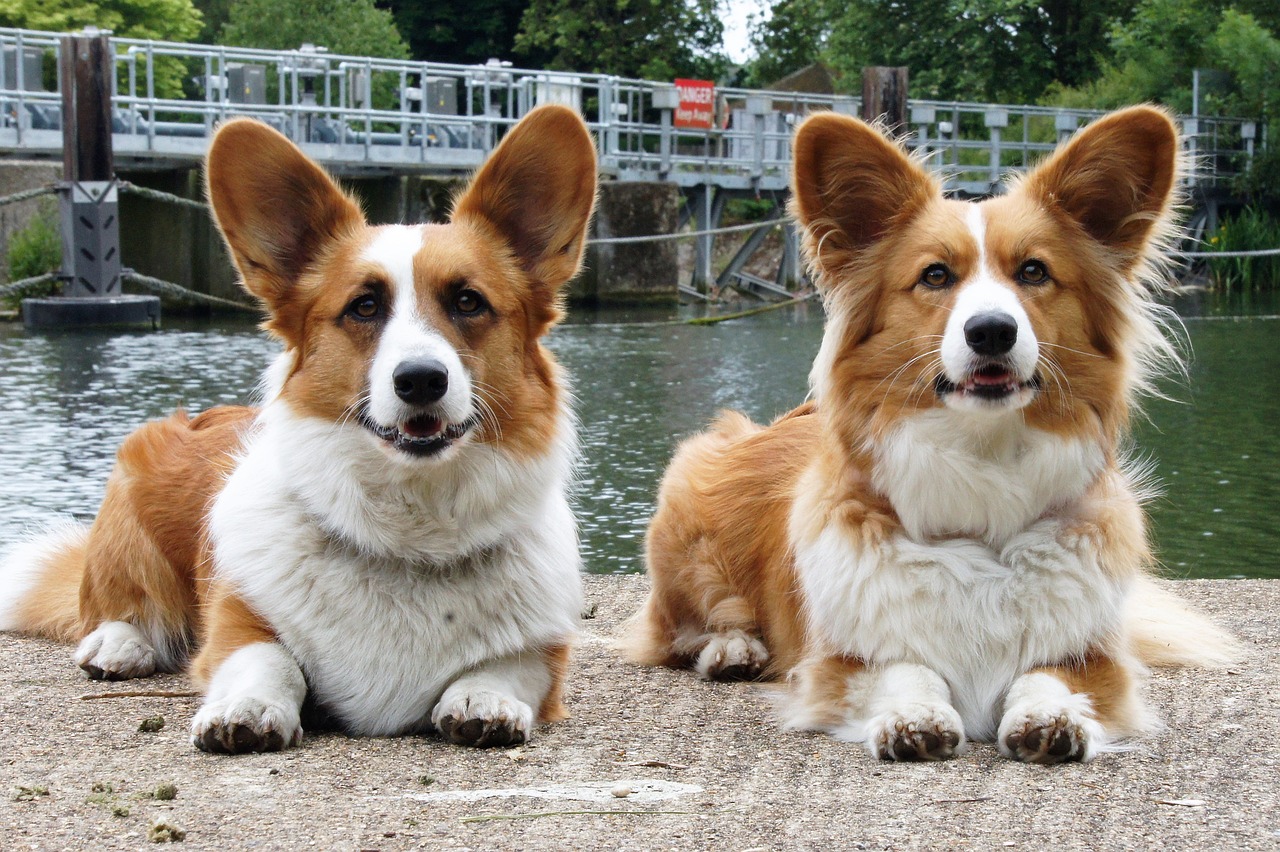
When you think of a herding dog, a Cardigan Welsh Corgi likely isn’t the first breed that comes to mind. After all, you’d think their short stature would make them ineffective at the job. But in fact, due to their shortness, Corgis were able to drive herds of cattle by nipping at their heels.
Even though both breeds of Corgi are classified as herding dogs, the Cardigan Welsh Corgi has been on the job for much longer. The Cardigan breed has been hanging around the British Isles longer than the Pembroke in general, having arrived in Wales around 1200 B.C.
The name “Cardigan” comes from the breed’s place of origin: Cardiganshire. But even though both types of Corgis have origins in Wales, the two breeds may have had a common ancestor a long time ago, but they have completely different origins, although they were briefly interbred in the 1930s. Cardigan Welsh Corgis are actually more closely related to Dachshunds than Pembroke Corgis.
Knowing the history of Cardigan Welsh Corgis doesn’t really help differentiate them, but their tails will. Cardigan Corgis have normal-sized tails, while Pembrokes have very short or bobbed ones, and are often docked, although this practice is becoming less common due to ethical considerations and legal restrictions. This is the biggest identifier when trying to tell the two breeds apart. Although they still have the characteristic Corgi stature, Cardigans can also get slightly bigger in both height and weight.
Personality
Corgis are known for being affectionate and playful. Although small, they have big personalities and will love their families tremendously. But of the two breeds, the Cardigan Welsh Corgi is believed to be quieter and maybe somewhat less energetic. They aren’t always as ready and willing to participate in activities. They take a more thoughtful approach instead of having a “jump right in” attitude.
But that’s not to say that they won’t bark at unexpected noises or danger. Their large ears make them quite alert, so Cardigan Corgis make good watchdogs that might take the time to assess a stranger before begging for pets and love.
Even though this breed does take a slightly slower approach to activities, that doesn’t mean they are lazy. Rather, they just enjoy spending time with their humans, regardless of whether that means lying on the couch all afternoon or going for a walk in the park. Like all dogs, Cardigan Corgis need their regular and age-appropriate and health-appropriate exercise, but it often doesn’t have to be anything extensive or high-energy.
Training
As evidenced by their herding history, Cardigan Corgis are smart and highly trainable dogs. Due to their intelligence and affection for people, training is a must to teach them how to act appropriately in social settings.
Training is especially important because although they are great around kids and other pets, they may have a tendency to nip at them due to their history with herding cattle. Cardigan Corgis may be more hesitant to respond to training, but once they warm up, they are very easy to train.
Another one of their key traits is that they are highly adaptable. If you’re unfamiliar with training a dog or feel as if your training is ineffective, try a professional dog trainer. The adaptability and socialness of Cardigan Corgis should allow them to respond easily and quickly, even if the person training them isn’t their owner.
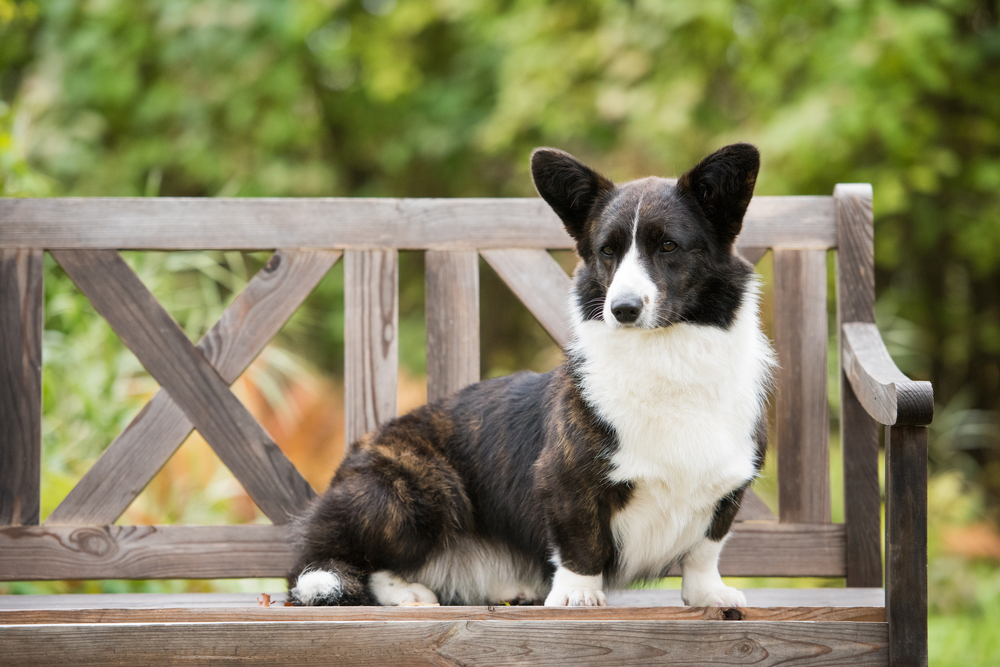
Health & Care
Healthy Cardigan Welsh Corgis can live an average of 12 to 15 years. They tend to have very few health problems, but the potential health conditions they do have are ones that could affect many dog breeds, such as hip dysplasia. Having your Corgi undergo hip evaluations regularly, especially in case of any signs of pain or lameness, can help identify this issue early on.
Their “long and low” body type can also leave them susceptible to back problems. One particular problem to look out for in Cardigan Corgis is degenerative myelopathy (DM). With DM, the spinal cord degenerates, which can eventually lead to paralysis. Usually, DM is only found in older Cardigans, but there is no treatment and no cure. It’s important to see a vet when you notice any discomfort or changes to your Corgi’s behavior.
Cardigan Corgis require regular care as far as grooming goes. Brushing several times per week or daily during shedding can keep their fur looking pretty and can prevent it from becoming matted. Nails should be trimmed regularly as well. They often shed all year long, but more during the autumn and spring. It is not necessary to shave or trim their fur.
This particular breed of Corgi can become overweight easily. Feeding them an appropriate amount of food per day based on their age, size, and requirements, divided up between two or more meals should keep them from becoming overweight. But you should consider their age and activity level and closely monitor their weight when determining how much to feed them. A vet can recommend specific amounts based on those factors.
If you need to speak with a vet but can't get to one, head over to PangoVet. It's an online service where you can talk to a vet online and get the personalized advice you need for your pet — all at an affordable price!
Suitable For:
Cardigan Welsh Corgis are a great match for families that have lots of love and affection to give. They will turn that affection right around to you. If you have kids or another dog, a new Cardigan Corgi that is well socialized should get along with them just fine. These dogs aren’t super active, but they do need regular daily physical activity combined with walks and playing. They certainly need a family that is willing to play and spend plenty of time offering lots of pets and love.

Pembroke Welsh Corgi Overview
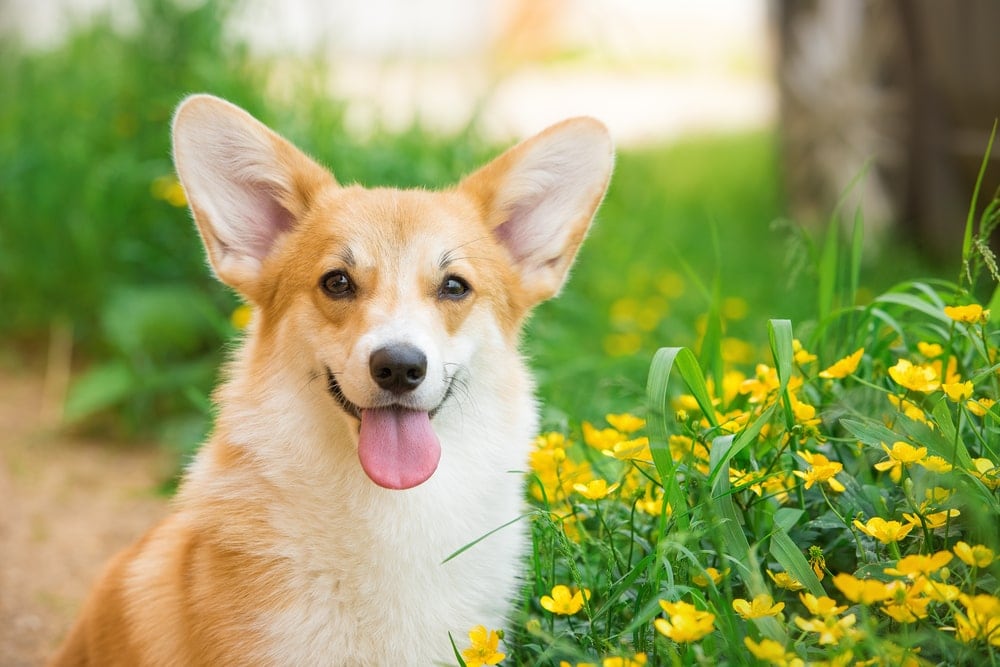
Pembroke Welsh Corgis were originally used as herding dogs, just like Cardigans were, but they haven’t been around as long. Pembroke Corgis were introduced almost 2,000 years after Cardigans, in 1107 A.D. That said, they are the more popular breed of Corgi and rank 11th out of over 200 dog breeds.
The name “Pembroke” comes from their place of origin in Wales: Pembrokeshire. They may have distant ancestors in common with Cardigan Corgis. Instead of being related to Dachshunds, Pembroke Corgis are more closely related to Chow-Chows, Pomeranians, and Norwegian Elkhounds.
Pembrokes can be distinguished from Cardigan Corgis based on the fact that they have short or bobbed tails, while regular-length tails are uncommon. They are also smaller in both average height and weight and have less diverse coat colors. Usually, Pembroke Corgis are going to be white and either red or sable.
Personality
Pembroke Corgis are friendly and tend to have more energy than Cardigan Corgis. They enjoy getting outside, are more outgoing, and won’t hesitate to jump in at the first sign of playtime. Pembroke Corgis are also slightly more alert and the louder of the two breeds.
They make excellent watchdogs but aren’t as reserved when it comes to strangers. They are more fearless, so new people may not always be seen as a threat and will instead be greeted with lots of love and affection. As much as they love their humans, many Pembroke Corgis prefer to be independent at times.
Being more energetic means that playtime is a necessity. They will still lie around the house with you, but they love to run around outside too. Pembroke Corgis are fast runners that are also agile despite being low to the ground. Long walks and even more adventurous activities, such as hiking, are activities that this particular Corgi breed will enjoy.
Training
Pembroke Corgis are intelligent dogs that have a carefree and independent attitude. Since they are more energetic and friendly, helping them develop proper social habits is easier when they are younger. It’s best to train them as puppies in order to achieve success before adulthood. But a professional trainer can also be effective into adulthood.
Pembroke Corgis will often do fine around small children as long as they are supervised. Again, they may try to nip as a reflection of their herding skills. However, they are willing to please their owners and can be quite responsive to training, especially when they have positive reinforcement and are surrounded by people who will provide them with affection.

Health & Care
Pembroke Corgis live an average of 12 to 13 years and are relatively healthy dogs. Like other breeds and their Cardigan counterparts, Pembroke Corgis aren’t immune to hip dysplasia and eye disorders. Regular hip evaluations and eye screenings by your vet can help diagnose and treat any potential problems early. DM also seems to be prevalent.
These Corgis also tend to shed a lot, especially during the change of seasons. A quick brushing daily during the shedding season, instead of several times per week, can help to alleviate some of the shedding. Bathing and nail trimming don’t have to happen as often; once a month will do. It’s also recommended to clean their ears and teeth regularly to prevent any wax buildup and to spot ear infections and dental problems early on.
This particular breed of Corgi is prone to being overweight, and your dog gaining weight is something that you will want to try to prevent with active efforts. Measure out their food correctly and adjust it based on their age, size, body condition score, health, and individual energy requirements. But if you do suspect your dog is gaining too much weight, ask your vet to help you come up with an appropriate diet plan.
Suitable For:
Pembroke Corgis are suitable for families with just as much energy as the dogs themselves. If your family loves to get outside and do things together, this breed will make an excellent addition to your adventures. Don’t get a Pembroke Corgi, or any breed for that matter, if you don’t have time to devote to playing, brushing, exercising, and loving this affectionate dog.

Which Breed Is Right for You?
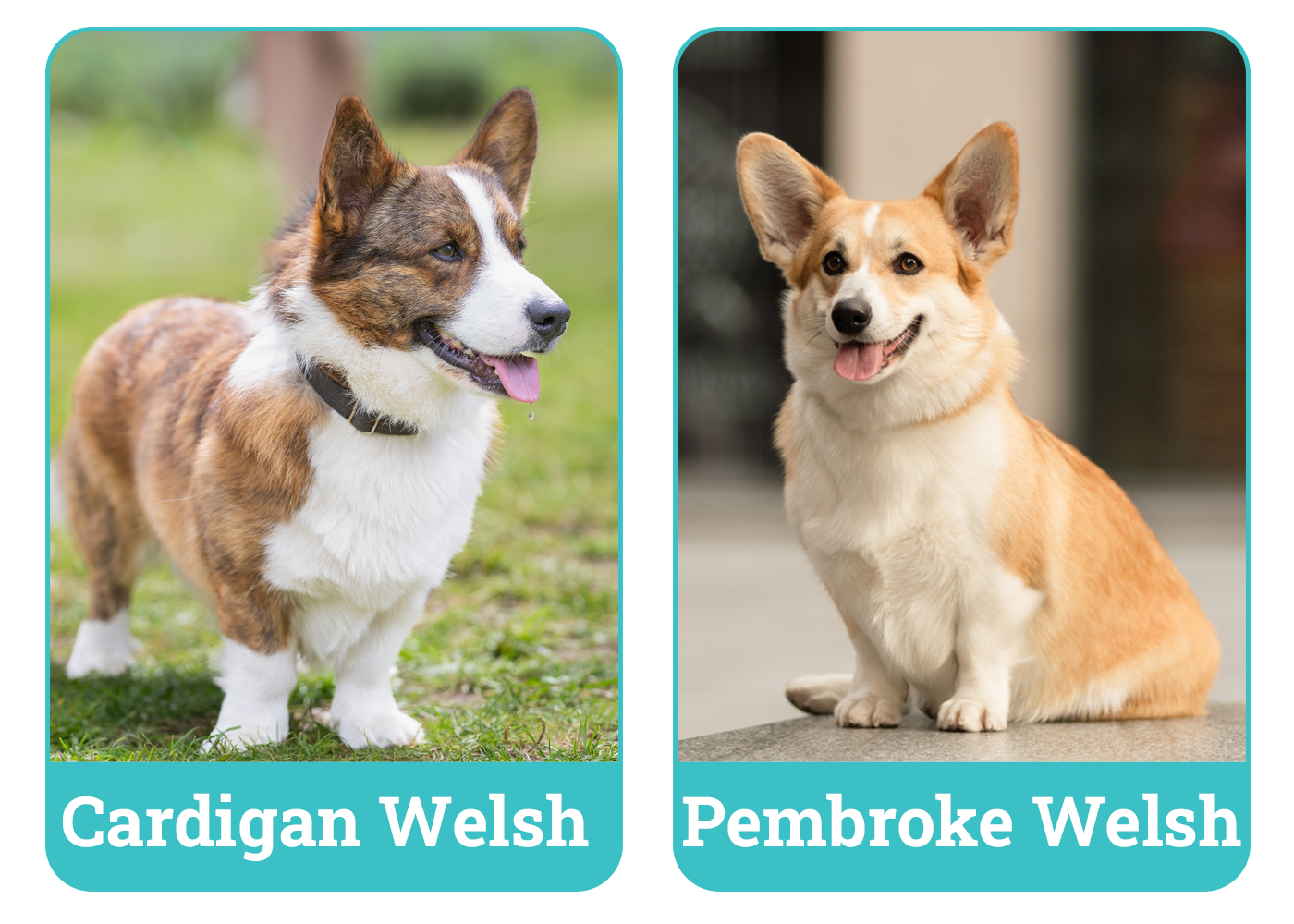
Cardigan Welsh Corgis and Pembroke Welsh Corgis may seem similar at first glance, but the two have somewhat distinct personalities and, of course, individual differences. Whichever one you choose should match your family’s personality and lifestyle.
Both breeds are intelligent, affectionate, and loyal to their humans, but they have slightly different energy levels. Easy-going families may prefer the more laid-back Cardigan Corgi, while the Pembroke Corgi may be better suited for families who are more adventurous.
The big personality of both of these breeds definitely doesn’t match their size. Whichever one you choose will bring plenty of spunk and laughs into your life. Your household won’t ever be boring or quiet again.
Related reads:
- How Long Do Corgis Live? Average Lifespan, Data & Care
- Mini Corgi vs. Corgi: Thorough Breed Comparison


